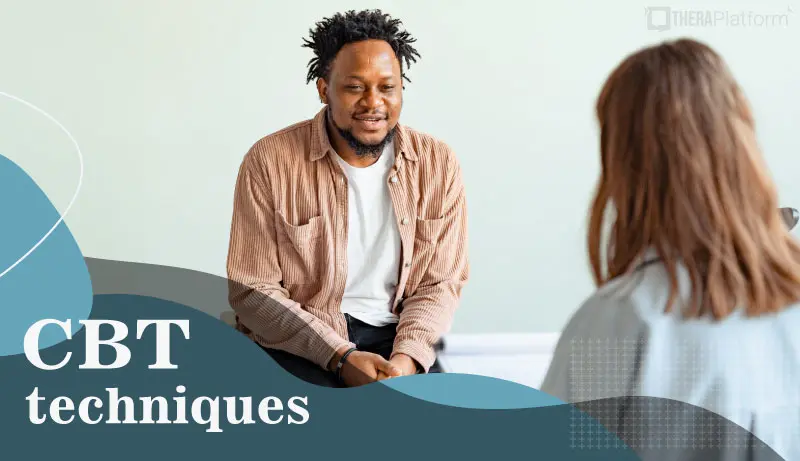Sensorimotor psychotherapy

Sensorimotor psychotherapy emphasizes the importance of the mind-body connection in the treatment of illness. Dr. Pat Ogden was working in a psychiatric hospital in the 1970s when she began her journey toward creating sensorimotor therapy. She saw how traumatic experience was expressed physically as well as mentally and felt that both needed to be addressed to effectively treat the individual. Sensorimotor therapy helps the client develop the skills to regulate emotional and autonomic arousal, and free them from the physical manifestations of trauma.
The three phases of sensorimotor therapy
1) Safety and assessment
The foremost goal of the first phase of sensorimotor psychotherapy is to help establish therapy as a safe place for exploration. Without a sense of safety, the client will not feel free to examine their trauma triggers and their responses. It is also during this phase that the client gains awareness of their inner experiences and how their thoughts and emotions are linked with physical expressions. For example, the client may be made aware that they cringe and take a defensive posture when the nature of their trauma is mentioned. The therapist is also likely to note how the client has coped with triggers in the past and any areas that need to be further developed.
2) Processing
This phase involves a deeper exploration of the trauma and its subsequent effects on the mind and body. The client will develop the ability to separate past traumatic feelings from the present so they may function more effectively. The therapist will also try to help the client perform actions that they may have felt powerless to do at the time of the trauma. A client that was a victim of a sexual assault, for instance, may practice saying “no” and putting out their hand to stop their attacker. In this way, they feel empowered and can start to heal from their past.
3) Integration
In this final phase, barriers that are holding people back will continue to be torn down. Further consolidation of cognitive and physical coping actions occurs. Clients will work on changing cognitive distortions so their emotional and physical reactions are more adaptive. For example, a client that believes that they are worthless due to past victimization will learn to hold their heads high and understand that they have a lot to offer others. The end goal is to alter responses to past trauma so individuals are more confident and effective in all aspects of their lives. Instead of allowing the past to rule their minds and bodies, clients will look toward a more positive future.
Note: The phases of sensorimotor therapy are not time limited or highly structured. Therapy proceeds at the pace of the client in a manner determined by the therapist.
Concepts of sensorimotor therapy
Dual awareness
For sensorimotor therapy to be successful, clients must be able to maintain a condition of dual awareness. In a state of dual awareness, the client can objectively observe their experience and feel its associated emotions/sensations at the same time. The mind and body will have instinctual responses to reminders of trauma. Most of these will be maladaptive. It is not realistic that these will disappear entirely, especially at the beginning of treatment. However, a client must be able to separate themselves from these reactions in order to evaluate them and function productively in the present. Dual awareness is necessary to move forward rather than being stuck in the past.
Mindful observation
Mindful Observation is a tool that encourages the state of dual awareness. In mindful observation, the client is asked to observe thoughts and sensations without judgment or interpretation. The therapist fosters this skill, by asking the client to concentrate on their body, thoughts, and feelings as they talk about their past trauma. The therapist will then point out patterns of response so that the maladaptive chain of reactions may be broken. Mindfulness takes time to learn and will be practiced both in and out of sessions.
Regulation of autonomic arousal
The autonomic nervous system is responsible for many of the anxiety responses to trauma, including fight/flight and freezing behavior. These responses need to be emotionally and physically regulated for healing to occur. Somatic techniques like muscle relaxation and abdominal breathing may be taught to clients to induce calm. Cognitive techniques, including imagery and mindful observation, will also help people regulate the nervous system in the face of traumatic memories.
Pros and cons of sensorimotor therapy
- Traditional forms of therapy do not emphasize the critical role the body plays in developing and maintaining trauma. Sensorimotor therapy takes this into account, so it may be seen as a more comprehensive and lasting treatment.
- There is little research on sensorimotor therapy. Although it is based upon the integration of more established concepts, such as cognitive, Gestalt, and other body therapies, it is difficult to determine its overall effectiveness. However, it has been posited to reduce PTSD symptoms, increase self-awareness, improve emotional regulation, and help develop effective interpersonal boundaries. Additionally, it has been deemed “neuroscientifically credible” by experts in the field of trauma.
- Due to its lack of research and structure, some insurance companies may question its use. Therapists and clients should take this under advisement if they are not paying out-of-pocket.
- In a pilot study of sensorimotor therapy, participants demonstrated significant improvement in self-awareness, dissociation, and receptivity to soothing.
- A recent treatment study, adapted from sensorimotor therapy, found that it helped with anxiety, body awareness, and self-soothing.
- As with most trauma treatments, clients may find re-experiencing memories of trauma difficult at times. While this may also occur with sensorimotor therapy, the focus on physical movement—rather than solely on cognitive processes—may reduce some of these effects.
Resources
Training in sensorimotor therapy is very limited. Almost all training is provided through the Institute of Sensorimotor Psychotherapy, with offerings all over the world. The institute offers three levels of training. Level I is the basic trauma training and takes at least 50 hours. Most training is offered as a hybrid course, splitting time between in-person and online education. It also offers less intensive CE training on topics related to sensorimotor therapy and contains links to relevant books and journal articles.
Here are some other valuable resources:
- CE titan PESI offers an extensive introduction to sensorimotor therapy online course with founder Pat Ogden.
- The one book you need if you want to learn the skills to administer sensorimotor therapy.
- Here is an introduction video course featuring Pat Ogden.
- Psychologist Jennifer May, Ph.D., presents 37 videos based on the activities and skills needed to conduct sensorimotor therapy. Truly an incredible resource for clinicians and clients alike.
Sensorimotor therapy recognizes the importance of the mind-body connection in the treatment of mental health. Utilizing cognitive, emotional, and somatic interventions, it aims to relieve the person of symptoms related to trauma.
Start 30-day Free Trial and explore TheraPlatform. HIPAA Compliant Video and Practice Management Software for Therapists.
Theraplatform is chock-full of useful resources, including articles and worksheets, for therapists who want to educate themselves on various types of psychotherapy. Theraplatform is an all-in-one EHR, practice management teletherapy tool for clinicians. You can't be a successful therapist in this day and age without a reliable and secure practice management platform. Try a 30-day free trial of Theraplatform today.
More resources
- Gestalt therapy
- Evidence-based practices
- Therapy resources and worksheets
- Therapy private practice courses
- Ultimate teletherapy ebook
- The Ultimate Insurance Billing Guide for Therapists
- The Ultimate Guide to Starting a Private Therapy Practice




